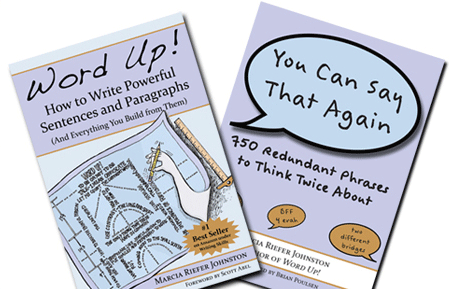A friend notes that the use of hyphens between adjectives seems to be going away. “Not sure why,” he says. “Hyphens make reading easier.”
I debated whether the lowly hyphen — that dinky, nonthreatening, barely there conjoiner of words — deserves a whole entry in a blog on Word Power. Is any punctuation mark less emblematic of power? A hyphen would never pull you over for speeding. When you’re choosing up teams, the hyphen is the last one to get picked. Hyphens don’t even merit sand in the face; they get ignored. Theirs is the ultimate humiliation: being left out.
But oh, when you see the hyphen for what it is, when you take the time to appreciate its unique qualities, you’ll find it a powerful ally indeed.
Example: true blue friend
The test: Say each adjective (true and blue) with the noun separately. True friend. So far so good. Blue friend. Not unless you’re talking about a Smurf. You don’t have a true and blue friend. True and blue work together as one adjective, a unit adjective. Uniting adjectives is the main thing hyphens were put on earth to do. Use the hyphen as the unifying force that it was meant to be, and you’ve got a true-blue friend.
Better examples: middle school child, ill prepared worker, light green suitcase
Huh? Is it a MIDDLE SCHOOL child or a MIDDLE school child? Are we talking about an ILL PREPARED worker or an ILL prepared worker? LIGHT… does that describe the suitcase’s color or its weight?
Of course, readers can figure these things out. But why force them to?
Should you always hyphenate a compound adjective (that is, multiple words working as one adjective) when those words directly precede a noun? Some say yes. Commonly, though, when a whole phrase, noun and all, becomes widely recognized, the hyphen disappears, and few miss it. For example, even in the language-usage-curmudgeon-filled-technical-writing world, the hyphen has all but dropped out of certain common terms, like content management system or (more controversially in the curmudgeonliest circles) quick reference card. Those who are comfortable with such omissions argue that the hyphen, for these terms and these readers, no longer has a job to do.
Unless you’re using that kind of tried-and-true term, though, give your readers the extra help that only a hyphen can.
Try this exercise in empathy. Read the following sentence s-l-o-w-l-y, and observe yourself as you read.
Stop out of control hyphen neglect.
The moment you realized that the space-separated words out and of and control wanted to be together, did your eyes zing back to the left margin like an old-fashioned typewriter carriage? Did you call forth imaginary hyphens to fill the voids and restore meaning so that you could go on?
With a little help from an undercelebrated hero, you can rescue your readers from such distress. Hyphens, unite!
—
(Thanks, Mark, for the inspiration for this entry.)




 What he said (did he shrug?) was this: “People will get used to it.”
What he said (did he shrug?) was this: “People will get used to it.”